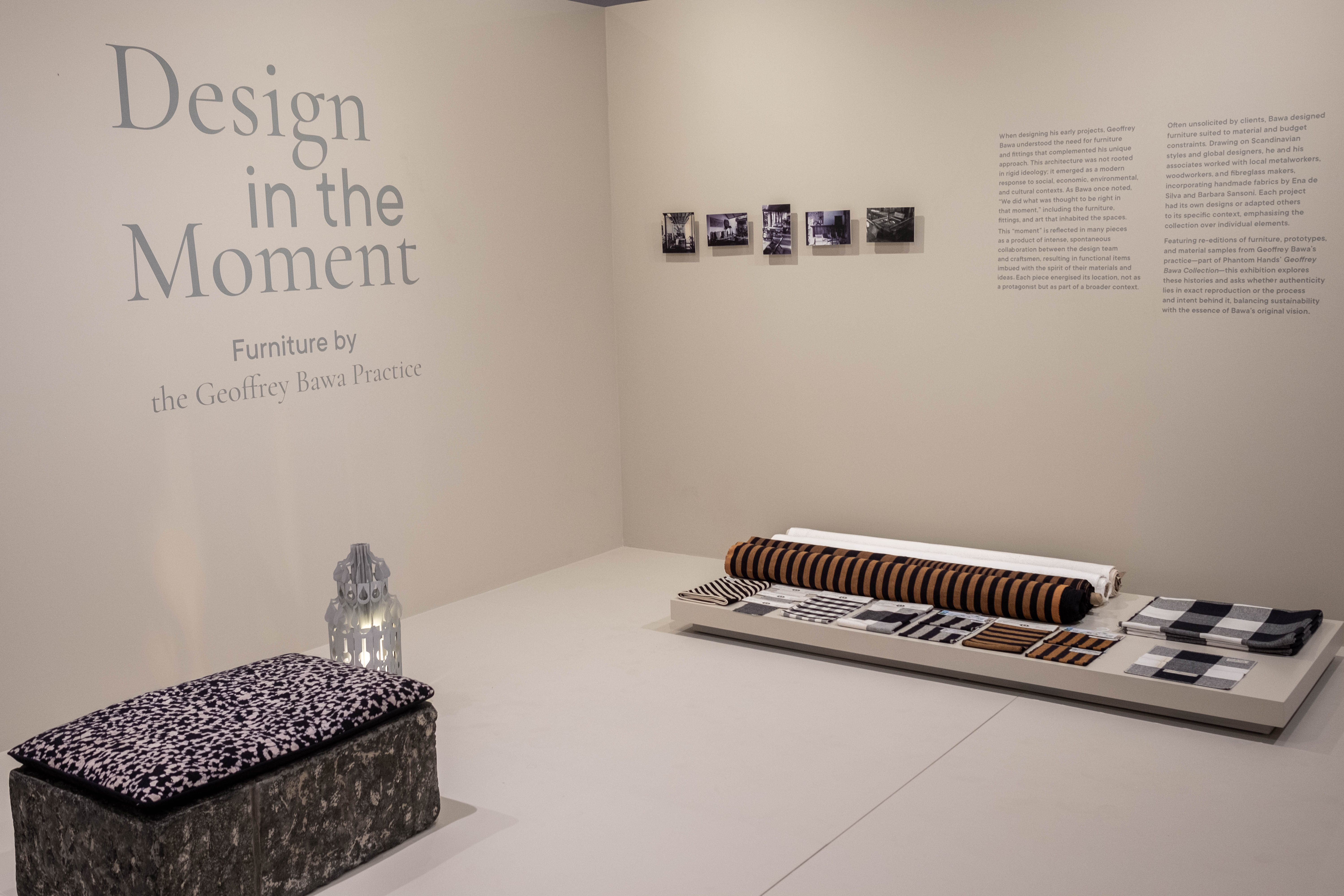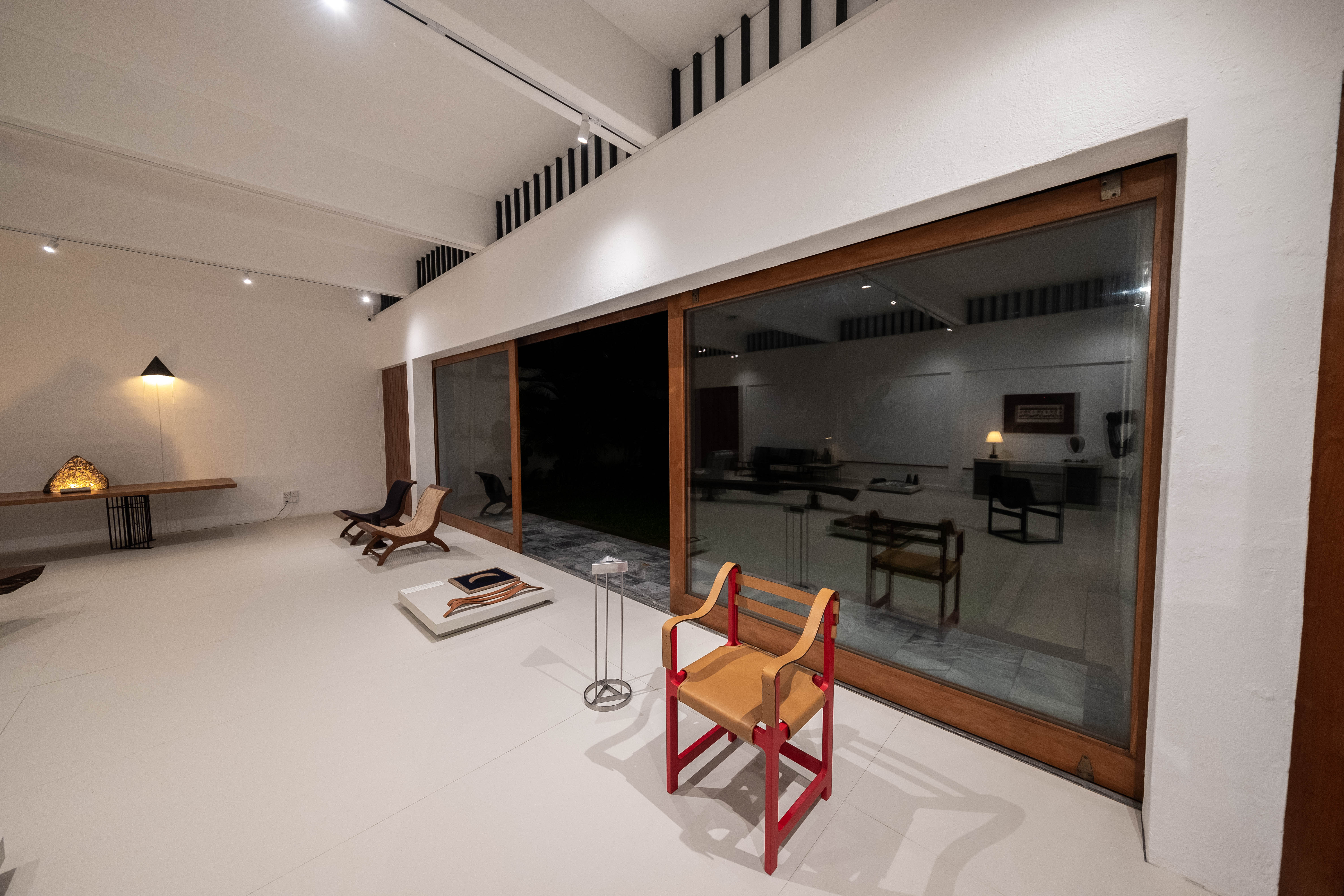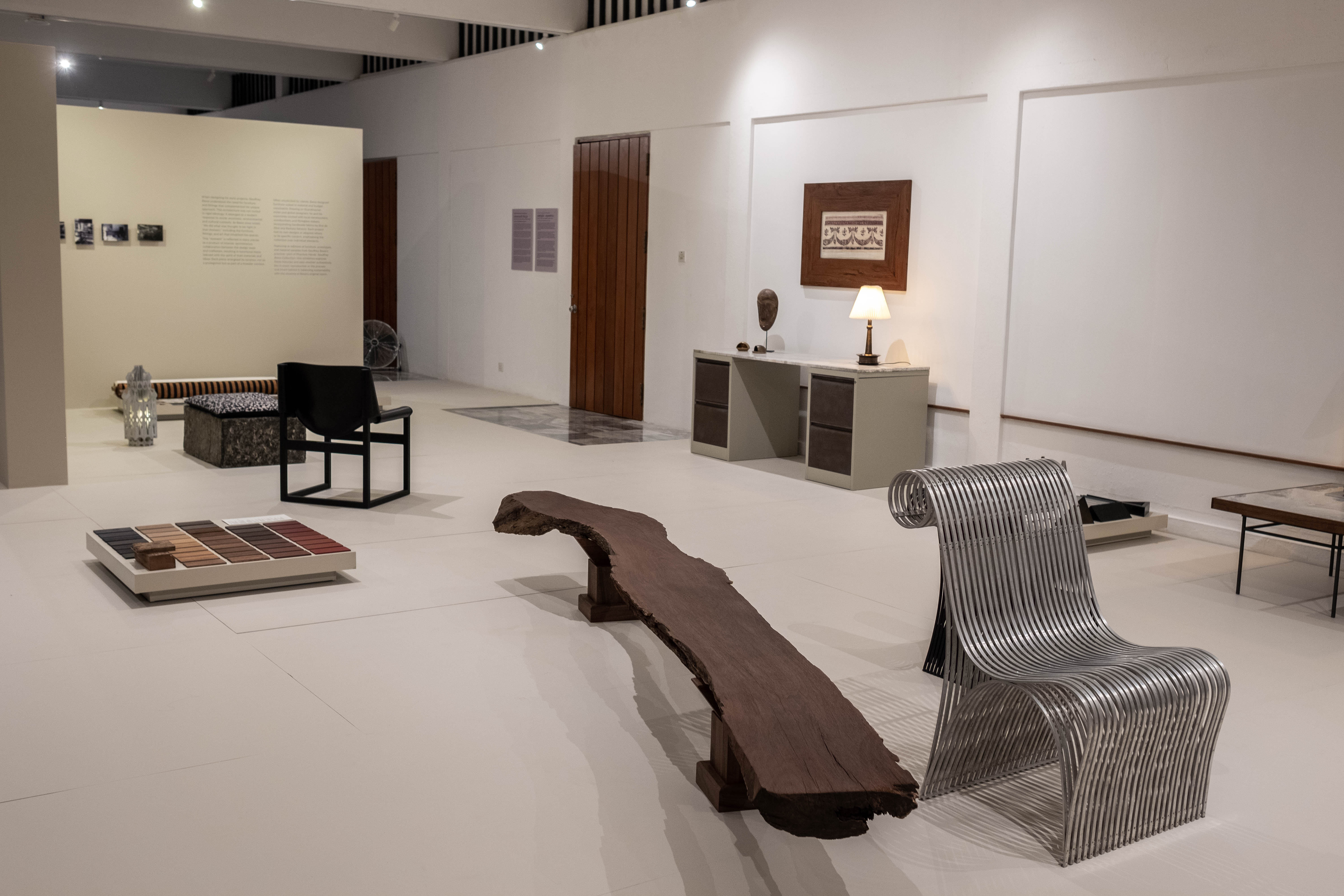

Furniture by
the Geoffrey Bawa Practice
13 December 2024
– 31 May 2025
– 31 May 2025
Open Wednesday–Sunday
12 noon – 6 p.m.
12 noon – 6 p.m.
The Bawa Space,
42/1 Horton Place, Colombo 07
42/1 Horton Place, Colombo 07
When designing his early projects, Geoffrey Bawa understood the need for furniture and fittings that worked with the new approach. This was an architecture that was not made from a particular ideological position, but as a modern response to social, economic, environmental and cultural situations. The architect was once heard to say that “We (he and his associates and collaborators) did what was thought to be right in that moment.” This included the furniture, fittings, and art that inhabited the spaces.
The “moment” the architect implies is captured in many of his pieces as a product of intense, spontaneous collaboration between members of the design team and the craftsmen, giving rise to a piece that is not only useful for the purpose, but contains the spirit of the moment in its materials and ideas. Each piece emanates an energy that livens up its particular location or the other pieces with which it was made; never a protagonist, but always part of a wider context.
Often unsolicited by clients, Bawa designed furniture he thought fit for the spaces and which met the material and budget restrictions of the time. Taking inspiration from prevalent Scandinavian styles and global designers, Bawa and his associates worked with local metalworkers, woodworkers and even fibreglass boat builders, incorporating handmade fabrics designed and made by Ena de Silva and Barbara Sansoni. Each project had its own designs or, if previous designs were used, they were in combination with others specifically made for that project. They got their meaning and life from being part of a collection and context, not as an individual element.
Bawa and his colleagues deviated from the formal, rigorous practice of making furniture, largely driven by form, function and manufacturability. Instead, they responded with urgency, where time frames for completion were small and transcending external constraints sometimes in a subversive way, was the driving—nearly liberating—force.
The exhibition will look at the histories within this oeuvre and consider how they can be meaningful for contemporary reproduction and use. Is the object to be a complete reproduction down to each screw, or is the process and intent as important as the aesthetic? In adopting new techniques of making and demands of a market such as sustainability while acknowledging the passing of past methods of production, what makes for an authentic reproduction of something that, in the first place, was not even commissioned?
–Aparna Rao and Channa Daswatte



Project Team
Curators: Aparna Rao and Channa Daswatte
Furniture: Phantom Hands Team
Exhibition Managers: Deepak Srinath and Sareena Hussain
Exhibition Design: Ibraheem Wazil and Thilini Perera
Exhibition Team: Geoffrey Bawa Trust Curatorial Team
Photographs: Geoffrey Bawa Archives, Phantom Hands
Collaborators: Barefoot, Aluwihare Heritage Centre, TAB India, Srikanth Dasappa, J & R Guram, Resil, Zanav Home
Installation: Yasaru Construction, Align Work, El Toro Roofing Product

